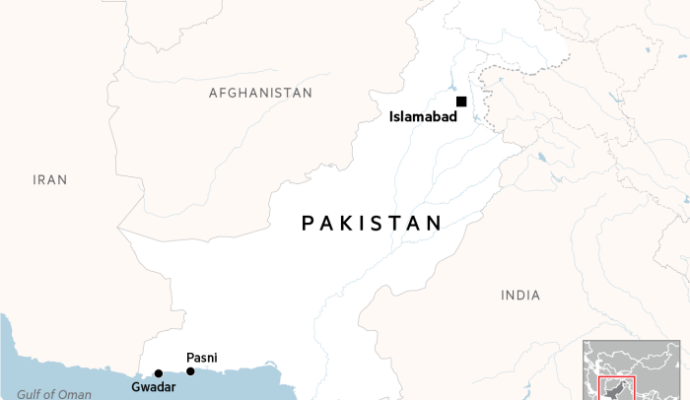China has used its first big artificial intelligence expo since the release of homegrown DeepSeek’s breakthrough model to assert its AI ambitions to an international audience, presenting an alternative to US President Donald Trump’s “America First” vision and showcasing the country’s vast manufacturing capabilities.
Robots, flying taxis and other AI-dependent technology from more than 800 companies were on display at the World Artificial Intelligence Conference (WAIC) that runs until Tuesday in Shanghai. The show attracted a more global audience than previous editions, including former Google chief executive Eric Schmidt, who helped shape the Biden administration’s chip export restrictions, and AI luminaries Yoshua Bengio and Geoffrey Hinton.
Beijing used the event to project its global AI ambitions as it vies with the US for technological leadership. Premier Li Qiang surprised the audience by announcing plans to establish a Shanghai-based organisation for AI co-operation and two new UN dialogue mechanisms for regulating AI. The move was widely interpreted as distinguishing China’s approach from that of the US, which a few days earlier laid out an “AI action plan” to establish American dominance in the technology.
“The US AI action plan is focused on America’s priorities — it’s a reflection of Trump’s ‘America First’ views,” said George Chen, partner and co-chair of digital practice at The Asia Group consultancy. “China, in contrast, wants to position itself as a defender of multilateralism, and it encourages more international co-operation.”
The technology on display, in part, reflected this vision, with many of the companies demonstrating products based on open-source models from domestic providers, notably Alibaba and DeepSeek. It was a stark contrast to last year, when many AI start-ups showcased applications based on one of Facebook owner Meta’s Llama models or OpenAI’s GPT series.
Beijing has touted the open-source models as evidence that China is willing to share the benefits of its AI development with the rest of the world. Industry insiders said the strategy had also contributed to the fast pace of technological progress.
“We see something in DeepSeek’s model, and we can use it and incorporate it into our model,” said an executive from Alibaba’s cloud computing business who declined to be named. “We are all learning from each other.”
Chen said China’s large market also meant it could test the application of AI technologies at scale and “faster than the US”. One area in which this was evident was robots. In the exhibition hall, humanoid machines paced among the crowds, while robotic dogs performed backflips and other feats of technical dexterity.

The past year has seen a vicious price war between Chinese AI companies that has lowered the cost for developers to build on top of open-source large language models. Robot makers have also benefited from stiff competition in the supply chain, making production cheap.
Local governments have added to the low costs by offering subsidies and incentives to start-ups willing to relocate manufacturing and engineering teams, sparking concerns about over-investment in sectors without a clear path to commercialisation.
“Humanoid robots still have lots of tech challenges in terms of palm flexibility, sensing and computing power needed for the main brain,” wrote Jefferies analyst Edison Lee in a note to clients. “Consumer adoption is still far away, given the high cost and immature tech.”
The result of the huge investment was on display at WAIC, where 60 companies showcased robots, many with similar designs and functionalities.

“The public’s interest in robotics has increased a lot this year,” said Wang Zuhua, business director of Shenzhen DX Intech, which makes robots for the entertainment industry. He said his company was mostly showing its products at exhibitions to drum up interest.
Suppliers of niche parts and software see opportunities to distinguish their offerings in an increasingly competitive industry. Many suppliers of robotic parts at the show said they were building new manufacturing lines to meet growing orders from robot makers.
“We’ve had a significant uptick in demand over the past year, including from clients in South Korea that are looking to China for high-quality and low-price components,” said Ryan Hom, head of business development at EYou Robotics, a supplier of robotic joint modules.
Shunshun Yin, head of AI at start-up Soul, which develops a companion chatbot for Generation Z users, said his company would not “make robots ourselves”. Instead, it could embed its companion app in “embodied AI” humanoid robots that could act as a “real-world friend or companion”.
China’s adoption of open-source AI has sparked concern among safety experts that it will be easier for malicious actors to access and modify models, creating harmful AI systems with disabled safety protocols.
Organisers of WAIC put a strong emphasis on the work that China was doing on AI safety, but many industry insiders said they were sceptical that companies had a strong incentive to incorporate safeguards into their technology seriously. During his talk, former Google chief Schmidt called for greater US-China co-operation on AI safety, warning of shared existential risks.
For many visitors, the expo showcased China’s strengths in AI. “I came here to discover how far China had come — I’m very impressed,” said Stephan Doukhopelnikoff, a Brussels-based AI and tech lawyer, as he watched three humanlike robots pivot their arms, swivel and sway.
“China is pushing AI and robotics forward while we in Europe are working very hard on regulating.”
